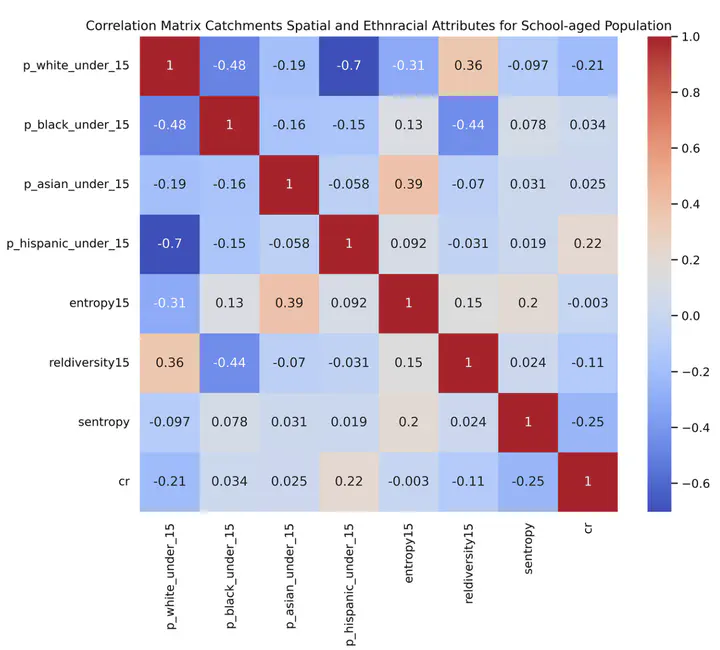
Abstract
Public schools and residential neighborhoods are two spatial contexts that can fundamentally shape the life outcomes of children. However, there is a lack of formalized approaches to comprehensively examine the spatial interactions between schools and neighborhoods. In this study, we develop a new approach to disentangle the spatial structure of the school-neighborhood nexus. We first introduce spatially constrained geodemographic clustering to operationalize neighborhoods. Then we develop measures for assessing the spatial congruence between school catchments and neighborhoods. Finally, we introduce spatial entropy measures to assess school diversity with respect to the neighborhoods they serve and to assess neighborhood diversity with respect to their relationships to local school boundaries. These newly developed measures allow us to examine how such interactions between schools and neighborhoods contribute to ethnoracial integration by performing a large-scale empirical investigation of the largest 110 metropolitan areas in the US, representing 24,507 elementary school catchments and 17,608 neighborhoods.